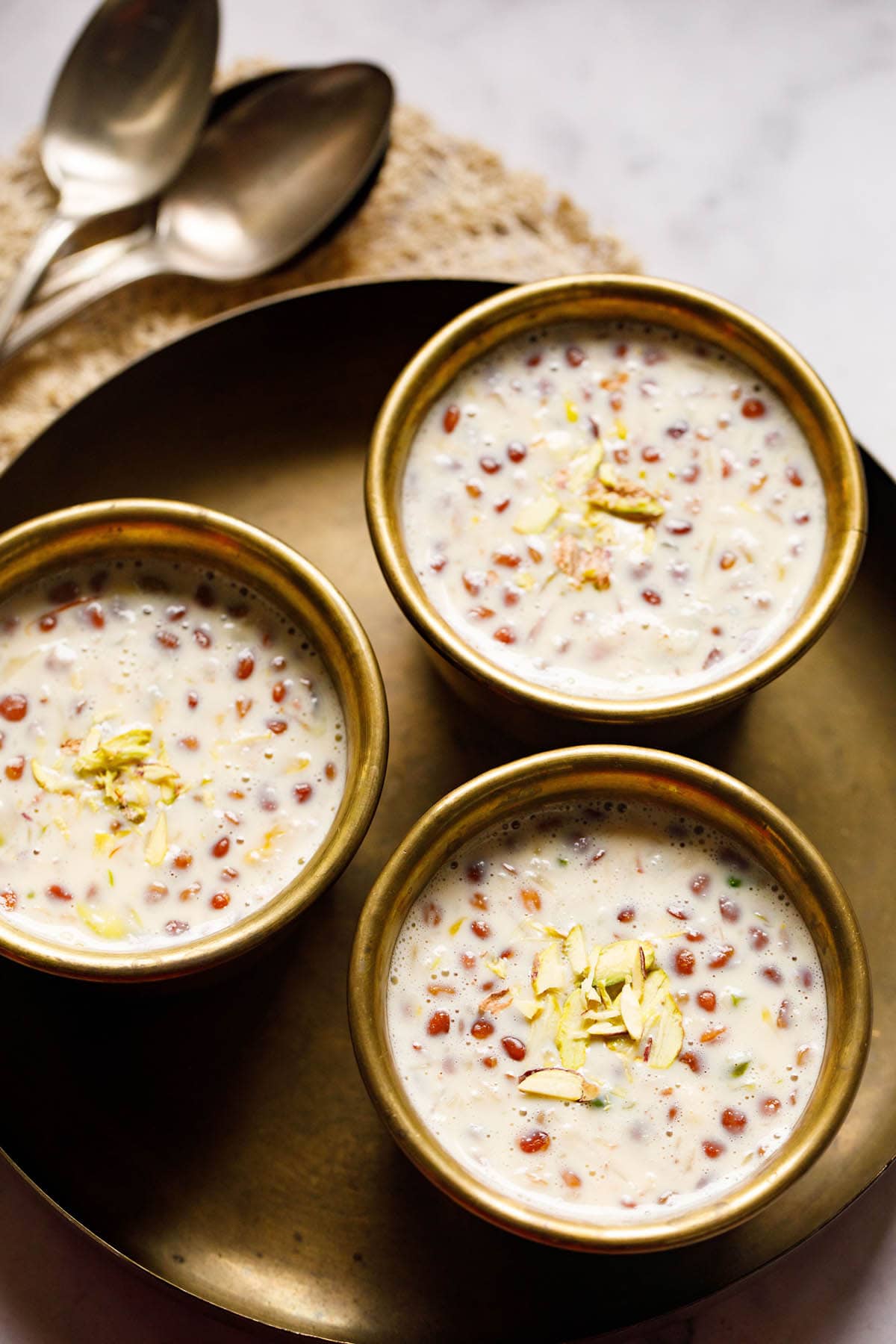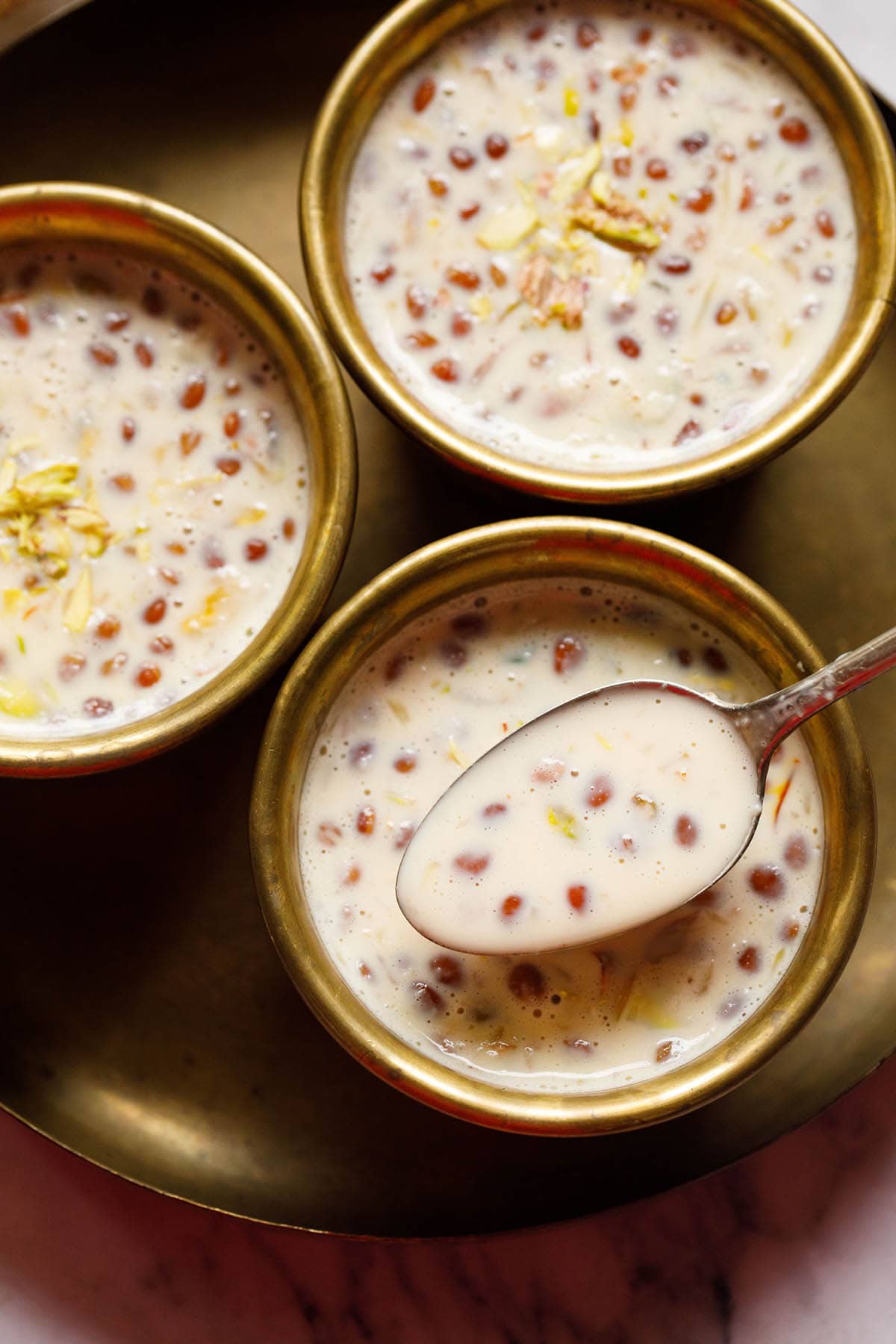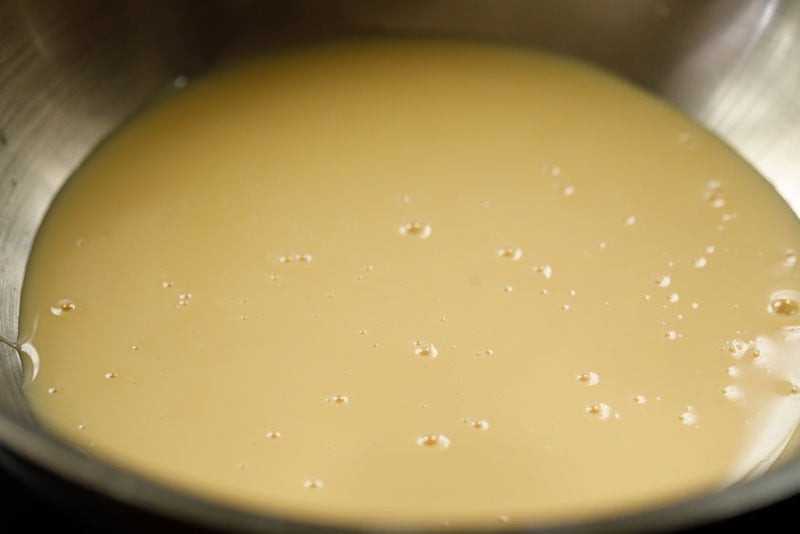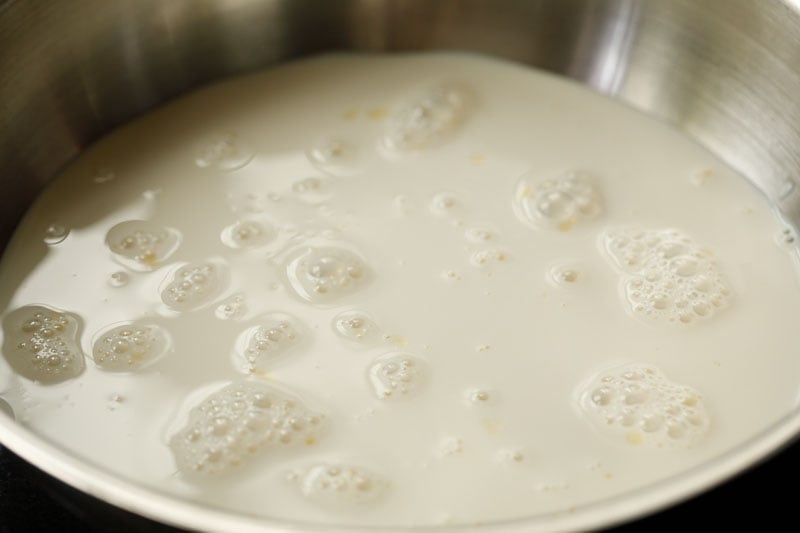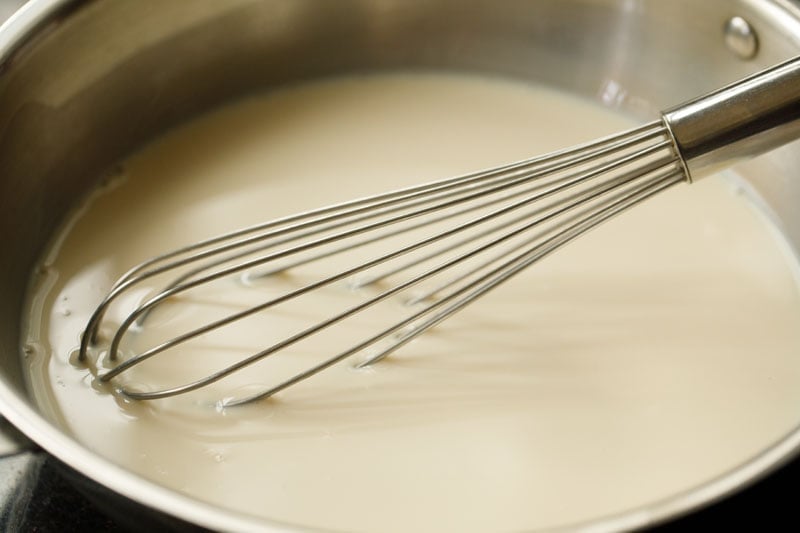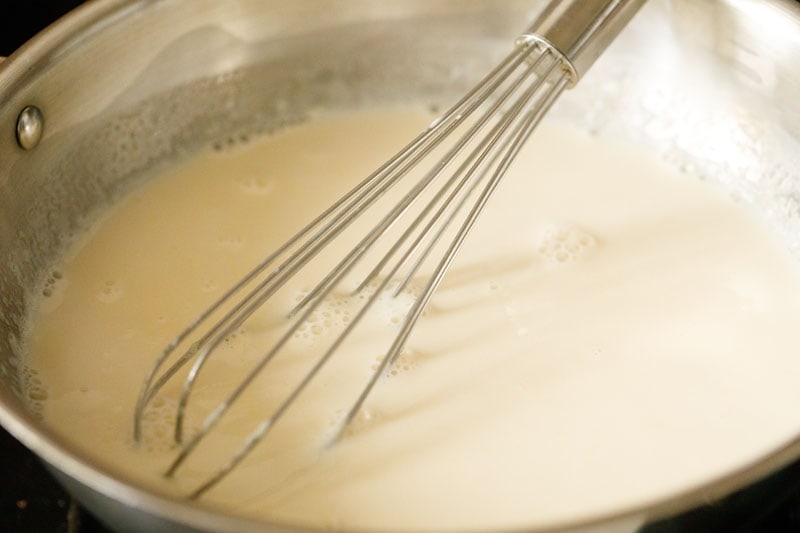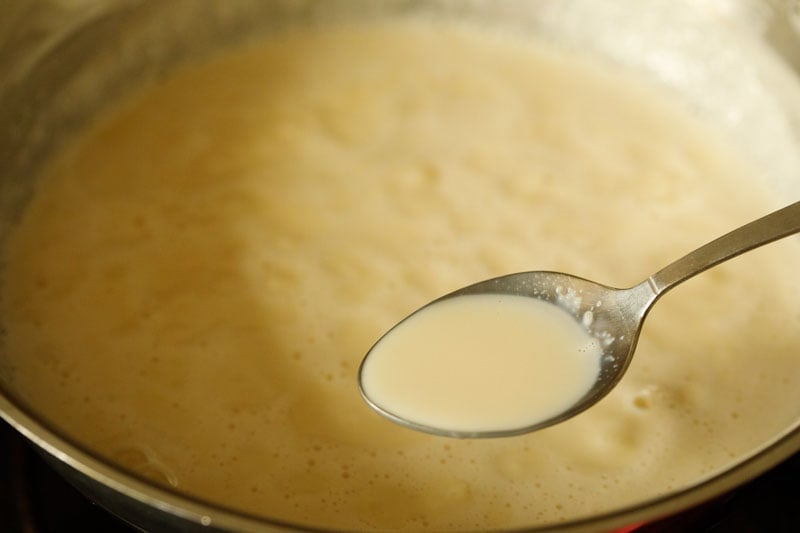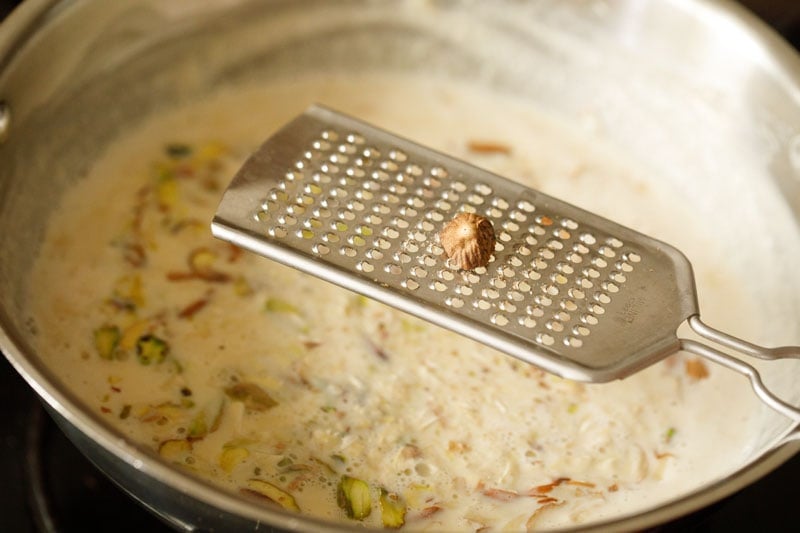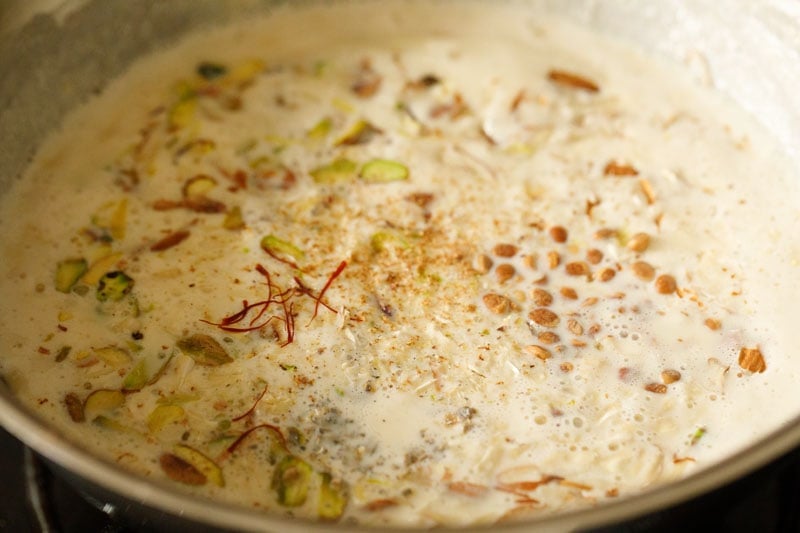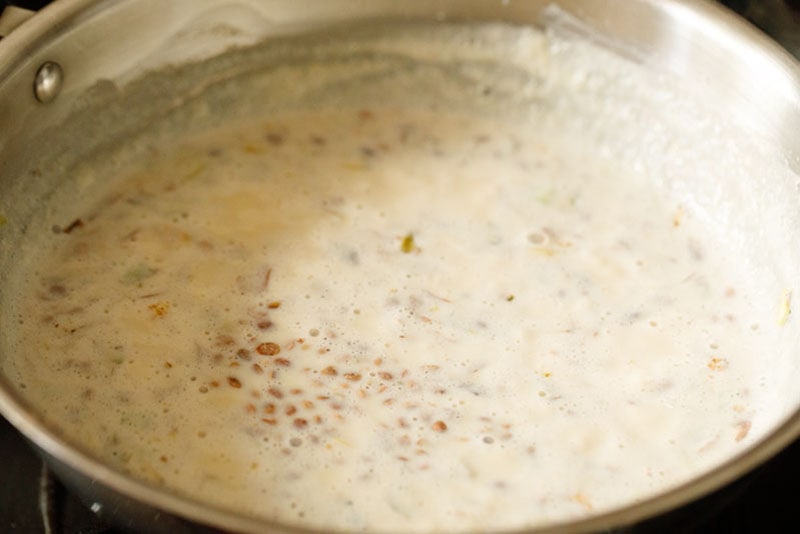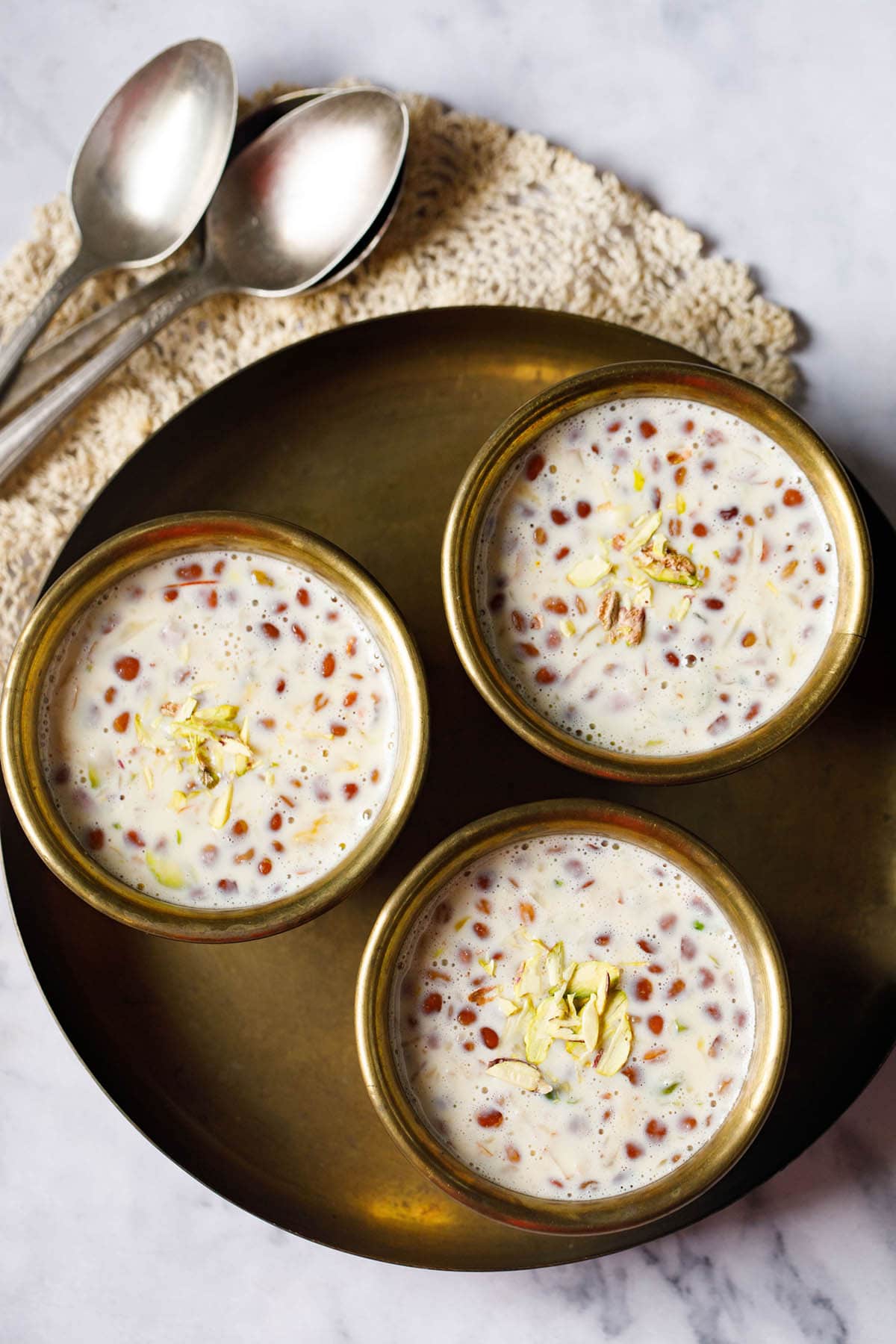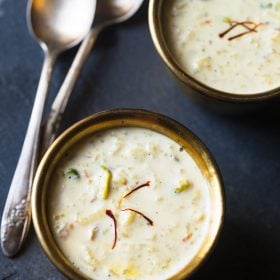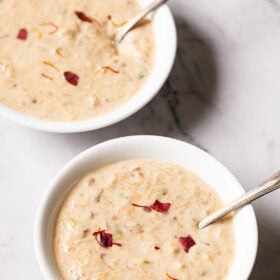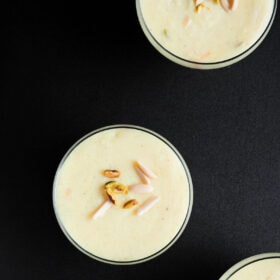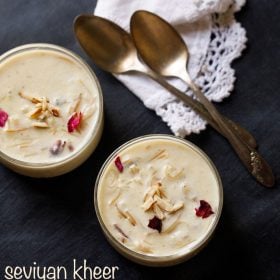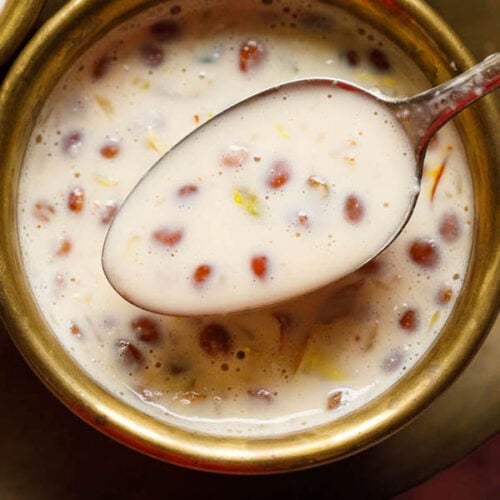What is Basundi
Basundi is a popular dessert most commonly made in Western India, in such states as Maharashtra and Gujarat. Basically it is flavored, thickened and sweetened milk that is made with slow cooking whole milk to which sugar, fragrant spices and nuts are added later. This basundi recipe is a quicker version made with sweetened condensed milk and comes together under 25 minutes. It’s a bit similar to Rabdi, which is often served in North India. Both are creamy milk-based dishes that feature aromatic spices and can be served warm or cold. However, while rabri has a thick and pudding-like consistency, basundi is much thinner and has a smoother flow. Traditional basundi recipe requires you to simmer whole milk on a low heat for several hours. This recipe of mine is an easy basundi recipe and it can be prepared in only about 20 to 25 minutes. My secret is to add sweetened condensed milk to speed up the thickening process while still achieving just the right creaminess and rich flavor. This recipe is enough to serve 4 people (and can be easily scaled up), so it’s perfect to serve for dessert at special occasions and gatherings. Plus it can be enjoyed any number of ways – hot, warm, or chilled! In this updated version of the post, I have halved the ingredients of my original recipe that would make for about 8 servings. If you plan to make the basundi sweet for parties or pot lucks or for festivals like Diwali, then easily scale it up depending upon the number of servings you want to make.
How to make Basundi Recipe
Prep and Cook Basundi Mixture
1. Firstly, take ½ a can of condensed milk (200 grams) or ½ cup + 2 tablespoons in a heavy skillet or thick bottomed saucepan or kadai (wok). 2. Add 2 cups of whole milk. Do not use low-fat or skimmed milk. Note: How much milk is needed depends on how much sugar is in the sweetened condensed milk you use. Start with 2 cups of milk, and add more as needed after the sweetened condensed milk has been added. 3. With a whisk mix well enough to combine the thick condensed milk with whole milk to get an even liquid. The mixture should be even or else the condensed milk at the bottom can burn while cooking. So make sure there is no condensed milk at the bottom of the pan. All the condensed milk should be mixed with the milk. 4. Switch on the heat and keep it to a low.
Simmer Mixture
- Place pan on the stove-top and simmer for 20 to 25 minutes. Stir after intervals of 3 to 4 minutes on low heat. Continue to stir often as you bring the mixture to a gentle boil. Be careful to not let the milk brown on the bottom of the pot. As it cooks, use a rubber spatula or wooden spatula to scrape the sides of the pan and stir the milk solids back into the basundi mixture.
- Meanwhile chop the nuts and set them aside. Add your choice of chopped nuts. My favorite nuts to include are: cashews, pistachios, almonds. Here I have slivered 6 cashews, 10 pistachios and 8 almonds. You can add more or less of each of the nuts.
- The basundi mixture will begin to thicken as you continue to cook it. After it simmers for 20 to 25 minutes the basundi should be slightly thick but smooth and creamy.
Make Basundi Sweet
- Add the slivered nuts.
- Grate nutmeg to get a pinch of it or add a generous pinch of ground nutmeg powder.
- Add ½ teaspoon cardamom powder (4 green cardamom pods, powdered in a mortar-pestle) and 10 to 12 strands of saffron. Also add 2 tablespoons of chironji (charoli seeds). Make sure that the chironji are fresh and not rancid or tasting bitter. As they get rancid very quickly. Chironji is also known as charoli and these small brown seeds give a lovely crunch and a nuttiness to this creamy dessert.
- Stir to mix and simmer it for another minute. Turn off the heat.
Serving and Storage Suggestions
- Transfer the basundi sweet to serving bowl/bowls. Serve this creamy dessert hot, warm or chilled garnished with some almond and pistachio slivers. If you plan to serve basundi cold, then cover the bowl or bowls and refrigerate for a few hours until the basundi becomes cold. Store leftovers in the fridge for 2 to 3 days in a covered container or bowl. Enjoy basundi as it or with Puri (Indian fry bread).
Expert Tips & Variations
Sweetness: The taste for sweetness is relative. With 2 cups milk, the basundi was slightly sweet for my taste, but my family found it perfect. So when the basundi is cooked, check the taste and if you find it a tad more sweet, add about ¼ cup warm or hot milk to lighten the sweeter taste. Cooking: It is important to stir the mixture often while simmering, so that the liquids do not become brown or burn at the bottom of the pan. So stir after intervals of 3 to 4 minutes while the liquids thicken. Chironji seeds: To get the authentic taste and flavor of the basundi, try to add chironji seeds. These tiny seeds add a good crunchy texture to the otherwise smooth and creamy consistency of the dish. Also make sure they are not rancid or tasting bitter. Flavoring spices: Do add the cardamom powder, but you can skip the saffron. Again for an authentic recipe, I would not suggest skipping nutmeg powder. Nuts: Choose to add nuts that are easily available to you. Cashews, pine nuts, almonds, pistachios are some nice options. Scaling: As is, this recipe has 3 to 4 servings. Basundi is usually served in small bowls. Scale the recipe easily to make 6 or 12 servings.
Please be sure to rate the recipe in the recipe card or leave a comment below if you have made it. For more vegetarian inspirations, Sign Up for my emails or follow me on Instagram, Youtube, Facebook, Pinterest or Twitter. Kheer Recipe | Rice Kheer Sheer Khurma Recipe (Vermicelli, Milk and Dates Pudding) Phirni Recipe | Firni Seviyan Kheer (Vermicelli Kheer) This Basundi recipe from the archives first published in September 2014 has been updated and republished on May 2023.
